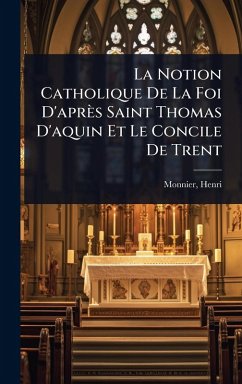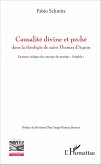La Notion Catholique De La Foi D'après Saint Thomas D'aquin Et Le Concile De Trent by Henri Monnier, originally published in 1893, delves into the Catholic understanding of faith as articulated by Saint Thomas Aquinas and affirmed by the Council of Trent. This work provides a detailed exploration of theological concepts central to Catholic doctrine, offering insights into the nature of faith, its relationship to reason, and its role in salvation. Monnier's study examines Aquinas's synthesis of Aristotelian philosophy and Christian theology, elucidating how Aquinas's thought shaped the Catholic Church's understanding of faith. Furthermore, the book analyzes the pronouncements of the Council of Trent, highlighting the council's reaffirmation of traditional Catholic beliefs in response to the Protestant Reformation. This book offers valuable insights into the historical development of Catholic theology and its enduring relevance in contemporary religious discourse. This work has been selected by scholars as being culturally important, and is part of the knowledge base of civilization as we know it. This work was reproduced from the original artifact, and remains as true to the original work as possible. Therefore, you will see the original copyright references, library stamps (as most of these works have been housed in our most important libraries around the world), and other notations in the work. This work is in the public domain in the United States of America, and possibly other nations. Within the United States, you may freely copy and distribute this work, as no entity (individual or corporate) has a copyright on the body of the work. As a reproduction of a historical artifact, this work may contain missing or blurred pages, poor pictures, errant marks, etc. Scholars believe, and we concur, that this work is important enough to be preserved, reproduced, and made generally available to the public. We appreciate your support of the preservation process, and thank you for being an important part of keeping this knowledge alive and relevant.
Bitte wählen Sie Ihr Anliegen aus.
Rechnungen
Retourenschein anfordern
Bestellstatus
Storno








